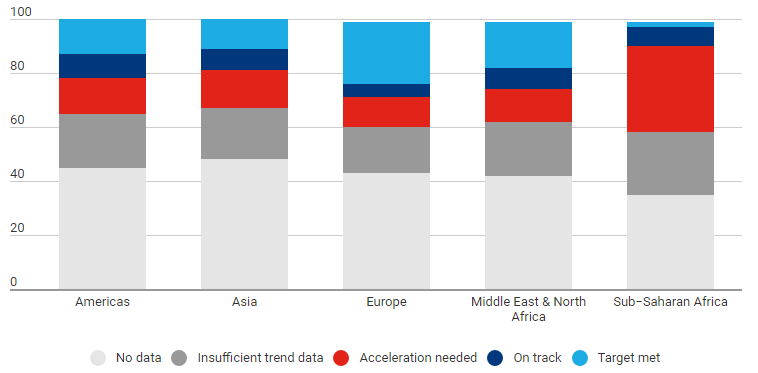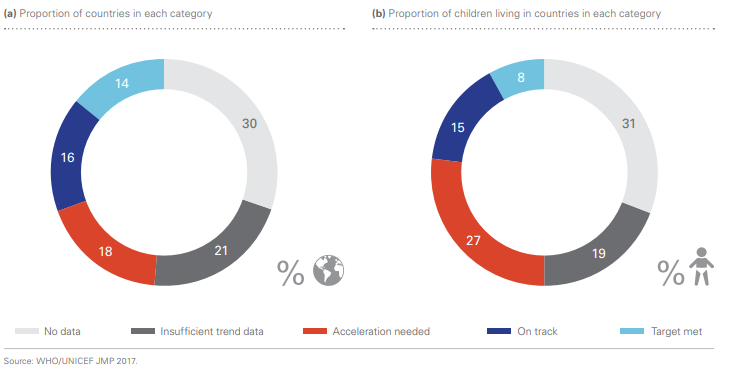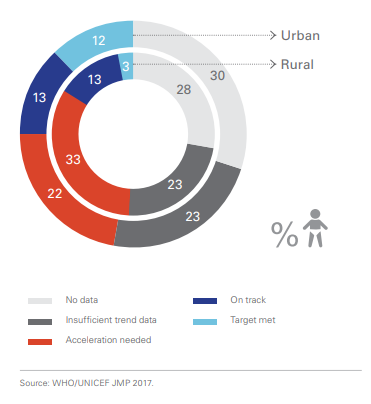This March is Water Action Month hosted by End Water Poverty (EWP). Each year, members of EWP come together to organise activities and campaign for WASH access. This year the campaign is focused on advocating for universal access to safely managed WASH services.
However, two years into the Sustainable Development Goal (SDG) era and we still do not have access to data to allow us to track access figures for safely managed WASH services.
How can we advocate for safely managed services when we haven’t got the data to identify where the need is?
This is a problem echoed across the SDG agenda. This week UNICEF launched ‘progress for every child in the SDG era’ – a report assessing the world’s performance to date and impact on every child. The report examines 44 indicators across the 17 SDGs to evaluate if we are on track.
The overwhelming finding of the report is that across all regions there is insufficient data to track progress. On average 75-80% of child-relevant indicators in each country have insufficient data or show insufficient progress to meet global SDG targets by 2030. That means that over half a billion children live in countries with insufficient data and are therefore uncounted.

What does this mean for water, sanitation and hygiene (WASH)?
The Joint Monitoring Programme (JMP) jointly implemented by WHO and UNICEF is responsible for the global access figures for water, sanitation and hygiene. The programme provides basic WASH figures for 96% of countries worldwide. However, two thirds of countries lack baseline estimates for safely managed services and hygiene. This means that we cannot measure a starting point for the SDGs. Over half of countries worldwide do not have sufficient data to track progress towards safely managed services.

Countries with available data are often still lacking disaggregated data. In order to truly be able to leave no one behind, we need to be able to move beyond the average figures in countries. We must be able to break down data by age, race, population and wealth quintile. Without this, children and those most marginalised are at greatest risk of not being counted.
Where data is available to be disaggregated by urban and rural settings, the report noted a stark contrast in children with access to safely managed services. 14% of countries around the world have achieved access to safely managed services for everyone. However, when adjusted to look at the percentage of children who live in countries that have access, it is 8%. Breaking that down further, 3% of children living in rural settings and 12% of children living in urban settings have access to safely managed services.

Over the past few years there has been increased pressure calling for a data revolution in global development. However, this does not appear to have increased data availability to the level needed. JMP has made progress with increasing the availability of WASH data globally, the UNICEF report presents it as a case of best practice on global leadership. However, this progress much be accelerated if SDG 6 are going to be achieved.
Lack of data is one of the biggest barriers blocking progress in the SDG agenda. Without data we cannot ensure that we are reaching the most marginalised populations and leaving no one behind.